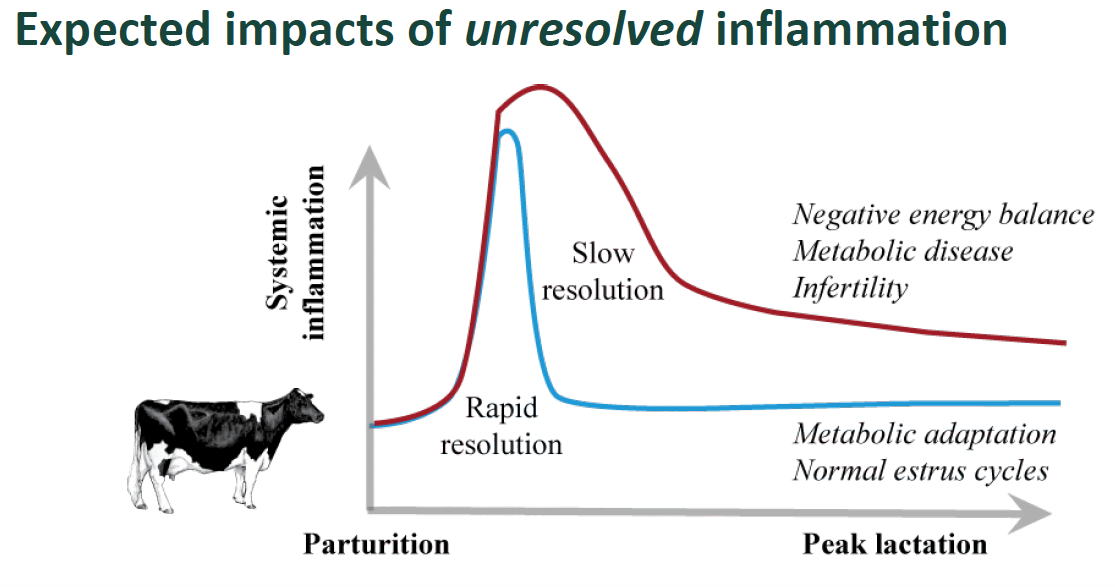Top Research Notes of 2023
Dairy nutrition consultants in Ohio, Michigan, Indiana and several neighboring states voted with their clicks, identifying last year’s most popular Research Notes.
Looking ahead to 2024 and beyond, here are their Top 5 of 2023:

For sure, high quality forages generate optimal de novo milk fat synthesis. However, the cow also needs dietary fat. Consider economical, rumen-available sources, says Penn State’s Dr. Kevin Harvatine.

Resolving Post-Calving Inflammation ASAP
For some heifers and cows, transition inflammation can persist beyond the normal first few days of lactation, causing lost milk production, increased disease, lower fertility.
To counter at the herd level, Michigan State’s Dr. Barry Bradford advises cost-effective, dietary approaches that support the speedy resolution of post-calving inflammation.

Controlled-energy Diets for Dry Cows
Overfeeding the dry cow impacts her transition and can disrupt her optimum “high fertility cycle.”
New guidance in NASEM 2021 offers greater control in dry cow diet formulation, including “Goldilocks” or “just enough” controlled-energy diets.
“However, there’s another advantage to Goldilocks,” says Professor James Drackley of the University of Illinois, “which is cost-savings during the dry period.”

Today’s high-producing cows still offer unrealized potential in lactation performance and components output, says Cornell’s Dr. Mike Van Amburgh.
If we can meet the cow’s “true” amino acid (AA) requirements, then we can further increase milk fat and protein without reducing yield. Moreover, non-essential AA (NEAA) like proline may be a limiting factor for milk casein, key to cheese production.

Tightening Safety Factors (Safely)
Safety factors in diet formulation minimize the risk of underfeeding without costly overfeeding.
“The best dietary safety factors,” says Dr. Bill Weiss with the Ohio State University, “take into account variability in the nutritional requirements of cows in a group or pen as well as variability in the nutrient composition of their ration.”
For Dairy Producers
Find research updates and technical information available to dairy producers and others in our public Learning Resources.
Questions?
Email FeedInsight 4U

